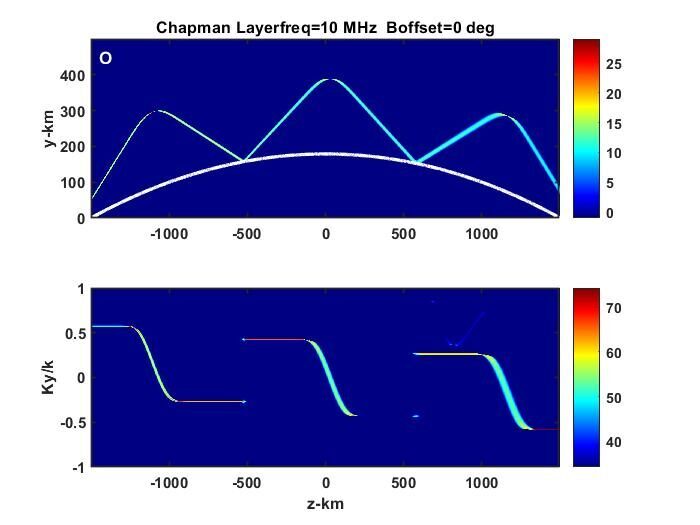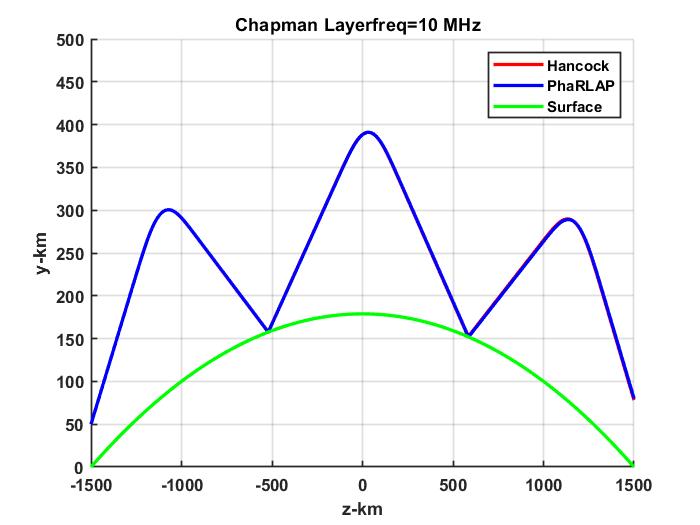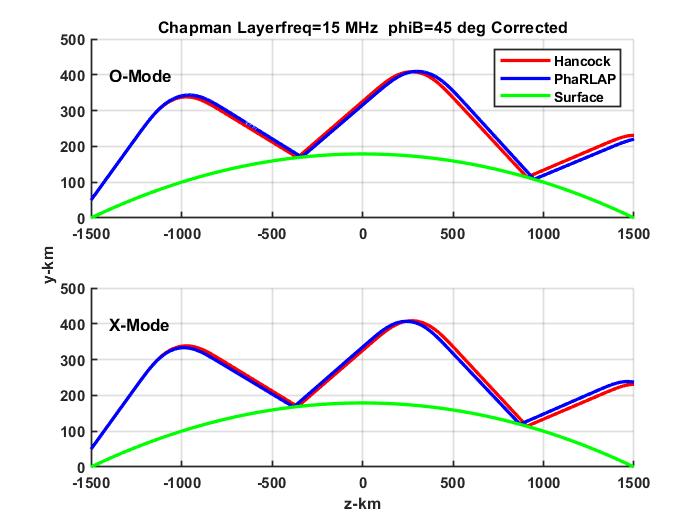All of the analysis summarized on this website thus far has been based on the scalar wave equation, which ignores polarization. The constitutive relation is a temporally and spatially varying complex scalar function. The scalar function was introduced in The Theory of Scintillation as a refractive index. However, that identification is dependent upon the assumption that fields in transparent in-homogeneous media are locally plane-wave-like. The formal connection is via a separately computed phase function referred to as the eikonal. The constitutive relation in Maxwell’s equations is the dielectric susceptibility. More accurately stated, the scalar wave equation characterizes the interaction of an electric field with a medium defined by a spatially and temporally varying susceptibility. When the time variation is slow compared to the propagation time from a source to a point of reception, the time-harmonic form of of the wave equation, e. g. Equation (2.1) in The Theory of Scintillation, is the formal starting point for analysis. The frequency range is close to or exceeding 100 MHz.
The historically named High Frequency (HF) range from 3 to 30 MHz is a legacy of the discovery of the ionosphere from radio propagation observations. The HF band supports long-range communication via refractive redirection of signals that would otherwise propagate into space. At HF frequencies the scalar susceptibility must be replaced by a 3×3 tensor, which continually transforms the vector electric field, thereby introducing an evolving polarization of the propagating wave field.
The theory of HF propagation has been treated extensively. However, full-field simulations of realistic propagation environments have been computationally prohibitive except for highly idealized environments. The same would be true for the scalar theory were it not for the forward approximation, introduced in Chapter 2 of The Theory of Scintillation. The forward approximation reduces the solution of the second-order propagation differential equation to two coupled first-order differential equations, which individually characterize waves propagating in the forward and backward directions. In the spatial Fourier domain the respective plane-wave vectors have only positive or negative components along a reference axis connecting a plane containing the source with a parallel but displaced observation plane. The forward approximation neglects backward propagating waves, whereby propagation in an in-homogeneous medium is characterized by integrating a first-order differential equation. The split-step method starts with a local phase perturbation followed by a propagation operation. This is referred to as the multiple-phase-screen method.
The theory of scintillation is based on the forward approximation, which can be further simplified by assuming that the propagating waves are confined to a narrow cone of propagation angles. In that case the propagation operator admits a form that can be evaluated in the spatial domain. This simplification makes the statistical theory of scintillation, as summarized in Chapter 3 of The Theory of Scintillation, analytically tractable. However, with modern computational resources simulations without the narrow-angle-scatter constraint are feasible. At HF frequencies refraction can change the propagation direction significantly, whereby narrow-angle-scatter is violated.
It is desirable to exploit the FPE advantages at HF frequencies. To do so the scalar susceptibility must be replaces with its tensor form. Following the same steps used to derived the scalar FPE one obtains three coupled first-order differential equations. Upon computing the eigenvector decomposition of the susceptibility tensor and transforming the fields the coupling is removed whereby the transformed equations can be integrated. The original fields are then reconstructed by applying the inverse transformation. In a recently published paper, Rino and Carrano, we developed and demonstrated a vector forward propagation equation (VFPE), as defined by Equations (350 and (36) in the paper.
We showed that in a propagation environment with sufficient regularity, that is no structure variation transverse to the propagation direction, solutions to the FPE can be constructed as summations of X and O characteristic modes (Figures 2 and 5 in the paper). Launching a narrow beam upward into an ionospheric Chapman-layer distribution, we found that the beam refracted back toward the surface is comprised of two orthogonally polarized components (Figures 10 and 11 in the paper).
The intensity peak and propagation direction, which is defined by a complementary Fourier domain peak, effectively define ray paths, which can be compared to ray theory. A second paper currently under review carried out that extension. However, before describing the results it is helpful to review ray theory and its relation to VFPE realizations.





